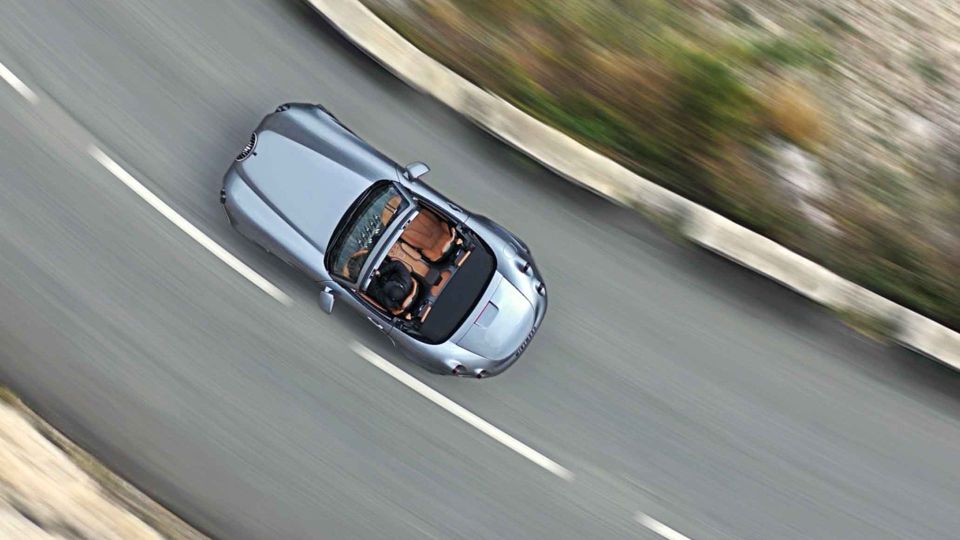
It looks like a classic British sports car and borrows its name from a Bond film, but the Wiesmann Project Thunderball hails from a small market town in Germany. As the world’s first fully electric roadster, it promises to combine traditional craftsmanship with thoroughly modern performance.
Beneath a curvaceous carbon fibre body, two electric motors deliver up to 680hp and 738lb ft of torque to the rear wheels. With a kerb weight of 1,775kg – relatively light for an EV – that means 0-62mph in 2.9 seconds, plus 0-124mph in just 8.9 seconds.
The car also has a target range of 311 miles from a 92kWh battery (an 83kWh version will be offered), plus the ability to rapid-charge at up to 300kW thanks to its advanced 800V architecture.
Living off the wall

Project Thunderball represents a comeback for Wiesmann after the company closed its doors in 2014. Founded by brothers Friedhelm and Martin Wiesmann, its first car was the BMW-powered MF 30 roadster, launched in 1993. The later MF 3 version borrowed its 343hp straight-six from the 2000-2006 (E46) M3.
Wiesmann moved on to building sleek GT coupes with BMW V8 engines in the early 2000s, but a failed attempt to expand into America left the brand in limbo for several years. It’s now owned by entrepreneur and car collector Roheen Berry, who says: “Project Thunderball is the car that will bring Wiesmann into the new electrified era”.
That said, the company also has another, non-electric sports car in the works. The forthcoming Project Gecko will use a BMW M Power V8 and takes its name from Wiesmann’s gecko logo – chosen because the cars ‘stick to the road like geckos to a wall.’
Rolling Thunder

The order book for Project Thunderball is now open, with first deliveries expected in 2024. Prices start at €300,000 (around £267,000), although every car will be bespoke and built to order.
CEO Roheen Berry added: “The car is driving beautifully and our investment in regenerative braking and latest battery technology has paid off. The Wiesmann brand not only has such a storied and wonderful past and legacy, but a bright and exciting future ahead of it.”
Tim Pitt writes for Motoring Research